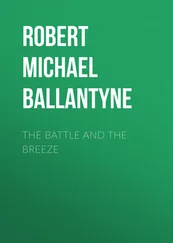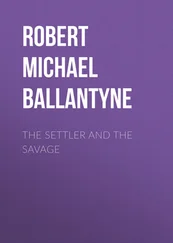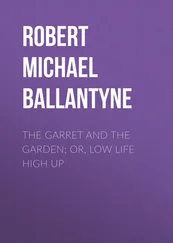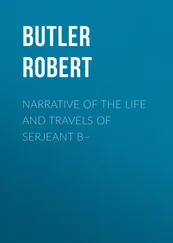Robert Vane Russell - The Tribes and Castes of the Central Provinces of India, Volume 4
Здесь есть возможность читать онлайн «Robert Vane Russell - The Tribes and Castes of the Central Provinces of India, Volume 4» — ознакомительный отрывок электронной книги совершенно бесплатно, а после прочтения отрывка купить полную версию. В некоторых случаях можно слушать аудио, скачать через торрент в формате fb2 и присутствует краткое содержание. Жанр: foreign_prose, История, foreign_edu, foreign_antique, на английском языке. Описание произведения, (предисловие) а так же отзывы посетителей доступны на портале библиотеки ЛибКат.
- Название:The Tribes and Castes of the Central Provinces of India, Volume 4
- Автор:
- Жанр:
- Год:неизвестен
- ISBN:нет данных
- Рейтинг книги:4 / 5. Голосов: 1
-
Избранное:Добавить в избранное
- Отзывы:
-
Ваша оценка:
- 80
- 1
- 2
- 3
- 4
- 5
The Tribes and Castes of the Central Provinces of India, Volume 4: краткое содержание, описание и аннотация
Предлагаем к чтению аннотацию, описание, краткое содержание или предисловие (зависит от того, что написал сам автор книги «The Tribes and Castes of the Central Provinces of India, Volume 4»). Если вы не нашли необходимую информацию о книге — напишите в комментариях, мы постараемся отыскать её.
The Tribes and Castes of the Central Provinces of India, Volume 4 — читать онлайн ознакомительный отрывок
Ниже представлен текст книги, разбитый по страницам. Система сохранения места последней прочитанной страницы, позволяет с удобством читать онлайн бесплатно книгу «The Tribes and Castes of the Central Provinces of India, Volume 4», без необходимости каждый раз заново искать на чём Вы остановились. Поставьте закладку, и сможете в любой момент перейти на страницу, на которой закончили чтение.
Интервал:
Закладка:

Winding thread
14. Their position improving
From the painful state of degradation described above the Mahārs are gradually being rescued by the levelling and liberalising tendency of British rule, which must be to these depressed classes an untold blessing. With the right of acquiring property they have begun to assert themselves, and the extension of railways more especially has a great effect in abolishing caste distinctions. The Brāhman who cannot afford a second-class fare must either not travel or take the risk of rubbing shoulders with a Mahār in a third-class carriage, and if he chooses to consider himself defiled will have to go hungry and thirsty until he gets the opportunity of bathing at his journey’s end. The observance of the rules of impurity thus becomes so irksome that they are gradually falling into abeyance.
15. Occupation
The principal occupations of the Mahārs are the weaving of coarse country cloth and general labour. They formerly spun their own yarn, and their fabrics were preferred by the cultivators for their durability. But practically all thread is now bought from the mills; and the weaving industry is also in a depressed condition. Many Mahārs have now taken to working in the mills, and earn better wages than they could at home. In Bombay a number of them are employed as police-constables. 136 136 Bombay Gazetteer , vol. xi p. 73.
They are usually the village watchmen of the Marātha Districts, and in this capacity were remunerated by contributions of grain from the tenants, the hides and flesh of animals dying in the village, and plots of rent-free land. For these have now been substituted in the Central Provinces a cash payment fixed by Government. In Berār the corresponding official is known as the Kāmdār Mahār. Mr. Kitts writes of him: 137 137 Bombay Gazetteer , vol. xi. p. 73.
As fourth balutedār on the village establishment the Mahār holds a post of great importance to himself and convenience to the village. To the patel (headman), patwāri and big men of the village, he acts often as a personal servant and errand-runner; for a smaller cultivator he will also at times carry a torch or act as escort. He had formerly to clean the horses of travellers, and was also obliged, if required, to carry their baggage. 138 138 Grant Duff; History of the Marāthas , vol. i. p. 24.
For the services which he thus renders as pāndhewār the Mahār receives from the cultivators certain grain-dues. When the cut juāri is lying in the field the Mahārs go round and beg for a measure of the ears ( bhīk payāli ). But the regular payment is made when the grain has been threshed. Another duty performed by the Mahār is the removal of the carcases of dead animals. The flesh is eaten and the skin retained as wage for the work. The patel and his relatives, however, usually claim to have the skins of their own animals returned; and in some places where half the agriculturists of the village claim kinship with the patel, the Mahārs feel and resent the loss. A third duty is the opening of grain-pits, the noxious gas from which sometimes produces asphyxia. For this the Mahārs receive the tainted grain. They also get the clothes from a corpse which is laid on the pyre, and the pieces of the burnt wood which remain when the body has been consumed. Recent observations in the Nāgpur country show that the position of the Mahārs is improving. In Nāgpur it is stated: 139 139 Nāgpur Settlement Report (1899), p. 29.
“Looked down upon as outcastes by the Hindus they are hampered by no sense of dignity or family prejudice. They are fond of drink, but are also hard workers. They turn their hands to anything and everything, but the great majority are agricultural labourers. At present the rural Mahār is in the background. If there is only one well in the village he may not use it, but has to get his water where he can. His sons are consigned to a corner in the village school, and the schoolmaster, if not superior to caste prejudices, discourages their attendance. Nevertheless, Mahārs will not remain for years downtrodden in this fashion, and are already pushing themselves up from this state of degradation. In some places they have combined to dig wells, and in Nāgpur have opened a school for members of their own community. Occasionally a Mahār is the most prosperous man in the village. Several of them are moneylenders in a small way, and a few are mālguzārs.” Similarly in Bhandāra Mr. Napier writes that a new class of small creditors has arisen from the Mahār caste. These people have given up drinking, and lead an abstemious life, wishing to raise themselves in social estimation. Twenty or more village kotwārs were found to be carrying on moneylending transactions on a small scale, and in addition many of the Mahārs in towns were exceedingly well off.
Mahli
1. Origin of the caste
Mahli, Mahili. 140 140 This article consists of extracts from Sir H. Risley’s account of the caste in the Tribes and Castes of Bengal .
—A small caste of labourers, palanquin-bearers and workers in bamboo belonging to Chota Nāgpur. In 1911 about 300 Mahlis were returned from the Feudatory States in this tract. They are divided into five subcastes: the Bānsphor-Mahli, who make baskets and do all kinds of bamboo-work; the Pāhar-Mahli, basket-makers and cultivators; the Sulunkhi, cultivators and labourers; the Tānti who carry litters; and the Mahli-Munda, who belong to Lohardaga. Sir H. Risley states that a comparison of the totemistic sections of the Mahlis given in the Appendix to his Tribes and Castes with those of the Santāls seems to warrant the conjecture that the main body of the caste are merely a branch of the Santāls. Four or five septs, Hansda a wild goose, Hemron, Murmu the nilgai, Saren or Sarihin, and perhaps Tudu or Turu are common to the two tribes. The Mahlis are also closely connected with the Mundas. Seven septs of the main body of the Mahlis, Dumriār the wild fig, Gundli a kind of grain, Kerketa a bird, Mahukal a bird (long-tail), Tirki, Tunduār and Turu are also Munda septs; and the three septs given of the Mahli-Munda subcaste, Bhuktuār, Lāng Chenre, and Sānga are all found among the Mundas; while four septs, Hansda a wild goose, Induār a kind of eel, as well as Kerketa and Tirki, already mentioned, are common to the Mahlis and Turis who are also recognised by Sir H. Risley as an offshoot of the Munda tribe with the same occupation as the Mahlis, of making baskets. 141 141 See lists of exogamous septs of Mahli, Sandāl, Munda and Puri in Appendix to Tribes and Castes cf Bengal .
The Santāls and Mundas were no doubt originally one tribe, and it seems that the Mahlis are derived from both of them, and have become a separate caste owing to their having settled in villages more or less of the open country, and worked as labourers, palanquin-bearers and bamboo-workers much in the same manner as the Turis. Probably they work for hire for Hindus, and hence their status may have fallen lower than that of the parent tribe, who remained in their own villages in the jungles. Colonel Dalton notes 142 142 Ethnology of Bengal , p. 326.
that the gipsy Berias use Mānjhi and Mahali as titles, and it is possible that some of the Mahlis may have joined the Beria community.
2. Social customs
Only a very few points from Sir H. Risley’s account of the caste need be recorded here, and for further details the reader may be referred to his article in the Tribes and Castes of Bengal . A bride-price of Rs. 5 is customary, but it varies according to the means of the parties. On the wedding day, before the usual procession starts to escort the bridegroom to the bride’s house, he is formally married to a mango tree, while the bride goes through the same ceremony with a mahua. At the entrance to the bride’s house the bridegroom, riding on the shoulders of some male relation and bearing on his head a vessel of water, is received by the bride’s brother, equipped in similar fashion, and the two cavaliers sprinkle one another with water. At the wedding the bridegroom touches the bride’s forehead five times with vermilion and presents her with an iron armlet. The remarriage of widows and divorce are permitted. When a man divorces his wife he gives her a rupee and takes away the iron armlet which was given her at her wedding. The Mahlis will admit members of any higher caste into the community. The candidate for admission must pay a small sum to the caste headman, and give a feast to the Mahlis of the neighbourhood, at which he must eat a little of the leavings of food left by each guest on his leaf-plate. After this humiliating rite he could not, of course, be taken back into his own caste, and is bound to remain a Mahli.
Читать дальшеИнтервал:
Закладка:
Похожие книги на «The Tribes and Castes of the Central Provinces of India, Volume 4»
Представляем Вашему вниманию похожие книги на «The Tribes and Castes of the Central Provinces of India, Volume 4» списком для выбора. Мы отобрали схожую по названию и смыслу литературу в надежде предоставить читателям больше вариантов отыскать новые, интересные, ещё непрочитанные произведения.
Обсуждение, отзывы о книге «The Tribes and Castes of the Central Provinces of India, Volume 4» и просто собственные мнения читателей. Оставьте ваши комментарии, напишите, что Вы думаете о произведении, его смысле или главных героях. Укажите что конкретно понравилось, а что нет, и почему Вы так считаете.












